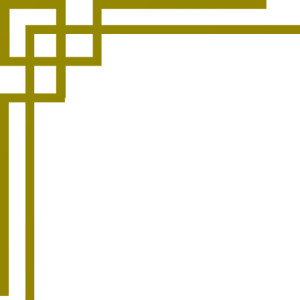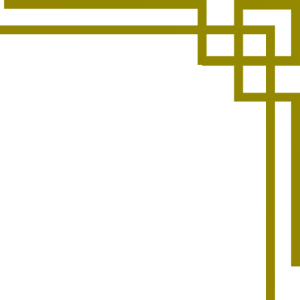The Engchoon Kuala Lumpur History Gallery





The Kuala Lumpur and Selangor
Chinese Assembly Hall
The traditional festivals of Malaysian Chinese are all derived from China. People of different native places had already practiced traditional festivals in their respective ancestral homes before coming to Southeast Asia. After arriving in the Southeast Asia, they brought their living habits together and passed on the cultural customs after settling down. In the past, there were many ceremonies and festivals of Engchoon. Today, Malaysia still retains some of the meaningful and common festivals as follows:
1. Chinese New Year
This is the most important festival in the Chinese community. Although it differs from the agricultural society celebrations in their ancestral homeland in the past, everyone still welcomes the arrival of the new year with the mindset of “a new start, everything renewed.” This is an opportunity for a thorough spring cleaning, discarding old and useless items from the home. Then, decorations are put up inside and outside the house, and some may also put up spring couplets. Both in action and mentality, people show full hope and expectations for the coming year.
On New Year’s Eve, everyone stays up all night to wait for the dawn, a custom known as “staying up late” or “guarding the year.” Many believe that staying up late can ensure longevity for parents, so New Year’s Eve is also called “Longevity Night.” After midnight on New Year’s Eve, the New Year begins. At this time, families begin the “greeting the new year” ceremony at their front doors. Apart from offerings, they also burn big incense stick and gold joss paper, followed by setting off fireworks and firecrackers to celebrate the arrival of the brand new year.
In the past, there were many taboos on the first day of the lunar new year: no cutting with knives to avoid cutting off good fortune; no sweeping with brooms to avoid sweeping away good luck; eating dry rice with whole leaf mustard greens for breakfast, symbolizing longevity; avoiding eating rice porridge to prevent encountering rain while going out; wearing new clothes to symbolize renewal, avoiding going barefoot to prevent bad luck; refraining from cursing, fighting, collecting debts, and instead speak nice words, avoiding words like death, hunger, and poverty; refraining from working hard, napping during the day. Most of these traditional customs have gradually faded and are no longer strictly observed.
2.Tian Gong’s Birthday
It is believed that this day marks the birthday of the Jade Emperor, an important celebration during the Lunar New Year for the Minnan people. Those who observe it with particular attention typically prepare a pair of sugarcane with roots and leaves. Offerings on the table include three cups of tea and rice wine, various fruits and vegetarian dishes, preserved fruits, red noodles, red turtle cake, fa cake, and three sacrificial animals etc. In front of the altar, incense burner and a pair of large red candles are placed. The presence of a “golden pig” (roast pig) among the offerings is considered a grand gesture.
3. Yuan Xiao Festival (Lantern Festival)
On the fifteenth day of the first lunar month, known as Shang Yuan Festival or Yuan Xiao Festival. Taoism designates the fifteenth day of the seventh lunar month as Zhong Yuan Festival and the fifteenth day of the tenth lunar month as Xia Yuan Festival. The festive period of the Spring Festival starts from the first day of the lunar new year until the fifteenth day, concluding after the Yuan Xiao Festival. According to tradition customs, on the early morning of the fifteenth day of the lunar month, families typically offer sacrifices to Tian Guan to pray for blessings, and also pay homage to ancestors, the God of the Earth, and the Bed Mother etc.
4. Qingming Festival
The custom of sweeping tombs during the Qingming Festival has long been observed in Engchoon, but nowadays some families choose to sweep tombs during the Winter Solstice. On the day of sweeping tombs, families bring food offerings to the gravesite, clear away weeds, scatter joss paper, and repaint red inscriptions on the tombstone to commemorate the deceased. Traditionally, it is believed that the earlier the tomb is swept, the better. After the cemetery is tidied up, the eldest and most senior family member usually hosts the ritual of ancestor worship. The sweeping of tombs during Qingming Festival is a manifestation of Chinese culture and ethics, it is one of the three major festivals for ancestral worship among the Chinese ethnic group. It is the grandest day after the Lunar New Year, also seen as another moment for family reunion. Through the ritual of ancestor worship, it embodies the noble tradition of remembering and honoring ancestors for their nurturing grace.
5. Duanwu Festival
The fifth day of the fifth lunar month is known as the Duanwu Festival, also called the Fifth lunar month Festival or Duan Yang Festival, commemorating the patriotic poet Qu Yuan. Malaysian Chinese also uphold the tradition of celebrating the Duanwu Festival, mainly through activities such as making rice dumplings (zongzi) and dragon boat racing. The focus on Qu Yuan’s patriotic legend, however, is relatively less emphasized. During the Duanwu Festival, households prepare rice dumplings as offerings to the Gods and ancestors. With improving economic conditions, there has been a greater variety of rice dumpling styles, incorporating precious ingredients. The flavors of rice dumplings have also become more diverse. Nowadays, some local communities organize rice dumpling wrapping competitions to promote and preserve this traditional skill, receiving enthusiastic responses.
6. Zhong Yuan Festival
In the seventh lunar month, commonly known as the “Hungry Ghost Month,” from the first day (when the “Gate of Hell” are opened) until the thirtieth day (when the gate is closed) of the month. According to tradition, after midnight on the thirtieth day of the sixth month, the gate of the hell will open widely, allowing wandering spirits to roam into the world of living. These spirits, known as “hungry ghosts” or “lost souls,” must return to the hell on the thirtieth day of the seventh month, marking the end of a month-long period of rituals and offerings.
7. Mid-Autumn Festival
The Mid-Autumn Festival has a long history and, like other traditional festivals, has evolved over time. In ancient times, there were imperial ceremonies for worshipping the sun in spring and the moon in autumn. The term “Mid-Autumn” is documented as early as the Rites of Zhou during the Zhou Dynasty. This festival became popular during the Song Dynasty and by the Ming and Qing Dynasties, it had become one of China’s major festivals alongside the New Year. The Mid-Autumn Festival is rich in legends, including stories of Chang’e flying to the moon, Wu Gang chopping the osmanthus tree, and the Jade Rabbit pounding medicine. In Malaysia, Chinese families still highly value this festival until today, and many overseas Chinese return home to reunite with their families.
8.Winter Festival
The Winter Festival refers to the Winter Solstice. In Engchoon, it involves making glutinous rice cakes and steamed cakes to worship ancestors, symbolizing a connection to their roots. There are various ways to prepare these cakes, such as boiling them in sweet or savory broth, or serving them with sugar, crushed peanuts, and kumquat. On the day of Winter Solstice, families make tangyuan (sweet glutinous rice balls) and offer them to their ancestors. Those living away from home are expected to return for this day to reunite with their families. There’s a saying in Minnan dialect: “people who do no return on Winter Solstice means they are people without ancestors or forget their ancestor; no return on Lunar New Year means they are people without home.” This highlights the importance of observing these traditional festivals.
In Malaysia, since there are no four seasons in a year, Malaysian Chinese celebrate the Winter Festival only in accordance with the traditional festival customs.
Ceremonies and celebrations
for weddings and funerals
1. Marriage Customs
In Engchoon, some of the traditional marriage customs of the past, are still preserved, while some have been simplified. In the old society, marriages were entirely arranged by parents and involved following cumbersome customs. These customs were quite similar across different regions and included steps like negotiate marriage proposal, exchanging birth details, engagement, presenting gifts for auspiciousness, exchanging betrothal gifts, exchanging written documents, ritual being adult, bidding farewell, accompanying the bride with dowry, wedding rituals in the local community, cross the stove, lifting the bridal veil, leading the bride, paying respects to heaven and earth, entering the bridal chamber, removing the bride’s head covering, huan yuan(换圆), exchanging cups of wine, hosting a banquet, meeting the groom’s parents, celebrating in the bridal chamber, entertaining guests, , exchanging flowers, and observing the one-month post-wedding confinement period etc. These rituals varied in complexity depending on social status and family wealth.
On the day of the wedding, relatives and friends present congratulatory gifts, and the groom’s family hosts a banquet where the newlyweds must personally serve wine to each guest, a custom known as “toasting the bride.” During the banquet, the groom’s uncle traditionally occupies the “head seat” (chief seat) to honor the bride’s family, a tradition that continues until today.
Engchoon’s marriage customs also included practices such as semi-marriage partnerships (joint marriages), bride-price payments (groom pays the bride’s family), remarriages (both men and women), widowed sisters-in-law marrying their deceased husband’s younger brothers etc, as well as practices like concubinage, arranged marriages since infancy, child bride (fostering young brides before marriage), “warding-off” wedding accompanying maids as dowries and other undesirable customs.
In modern society, young men and women of legal age can register their marriage with the government after mutual consent, simplifying the wedding ceremony. Some choose to forgo traditional weddings and opt for travel wedding. Nevertheless, the old traditional wedding customs still have reference values.
2. Funeral Rites
In the past, the funeral customs and procedures in Engchoon were as follows:
Before the patient’s passing, family members would gather to bid farewell. Upon death, curtains were removed, and the deceased was washed, dressed, and covered with a “water quilt”(水被), notify friends and relatives of the death. Rituals included the placement of offerings, setting up the memorial hall, and guiding the departed soul. Filial sons, daughters, and grandchildren would wear mourning clothes and observe mourning rituals.
Due to local government regulations in China, funerals typically took place the same day or the following day. At the designated time, relatives would place the body in the coffin, seal it, and secure it with coffin nails before a Taoist priest conducted a blessing. During the funeral procession, there would be mournful music, lanterns to guide the way, and sometimes banners, floral wreaths, and elegiac couplets. Children of the deceased would accompany the coffin, crying as they walked, followed by friends and relatives. After the filial son kneeling to express gratitude in the middle of the way, the procession of friends and relatives would stop. At the gravesite, after placing the coffin in the tomb and sealing it, the filial son would call out three times, “Father (or Mother), please return home,” symbolizing the soul’s return to the family. After the burial, a memorial tablet would be set up in the hall, with daily offerings of meals and tearful remembrance by female family members during the mourning period. After seven days, the offerings of meals and tears would continue on the first and fifteenth day of each lunar month until the final offering (known as “withdrawing the table”).
The first anniversay after the funeral, a small memorial ceremony (小祥”Xiao Xiang”) would be held, followed by a larger ceremony (大祥”Da Xiang”) at second anniversary , known as “Duinian” and “Sannian,” respectively. Offerings were prepared to honor the deceased, with special emphasis on merit. These traditions were believed to fulfill filial piety and repay the debt of gratitude to parents for their upbringing. Burials traditionally involved earth burial, although some practiced cremation. For Christians, funerals were conducted with prayers led by a pastor and fellow church members.
Funerals were considered inauspicious, with many superstitions and taboos. For instance, it was taboo for a cat to leap over the deceased, and those with conflicting Chinese zodiac signs should avoid contact to prevent “conflict.” During festive occasions, visitors to mourning families should refrain from saying “congratulations.” Those in mourning attire were prohibited from entering others’ homes without permission, and deceased persons who died away from home were not to have their bodies carried inside etc.
Many traditional funeral rites have evolved and simplified, yet the spiritual significance of these old customs remains worthy of exploration and study.

